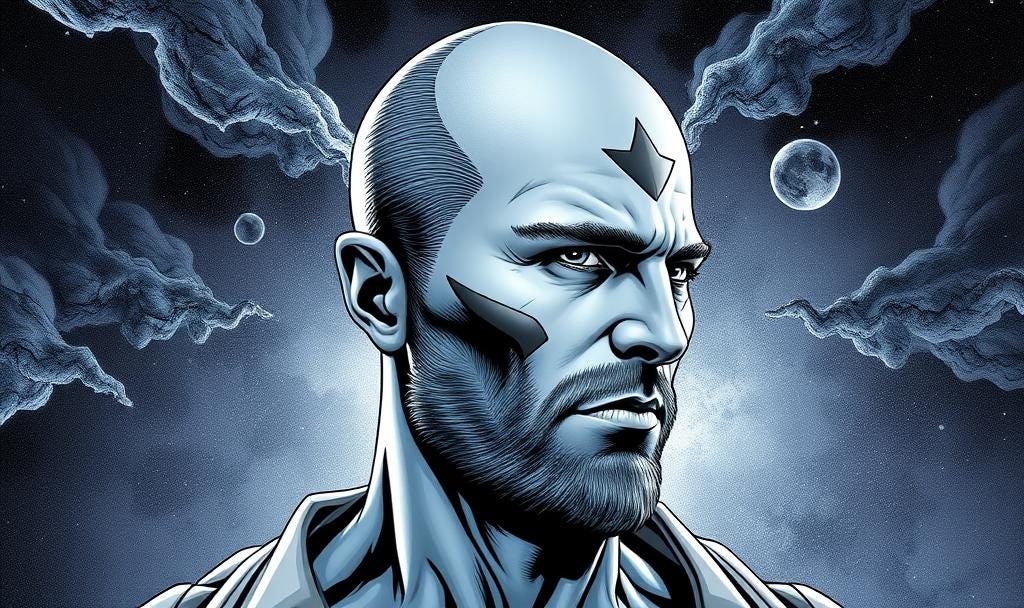You are receiving this newsletter because at some point you signed up for it to arrive in your inbox and I thank you for that. I cherish every reader here, free or paid and read and do my best to respond to every comment and email I get. It really helps me reach more people if you drop a heart or share this post. Thank you so much.

The day may come when you are happily working on your WIP and suddenly realize that something is wrong. The scene you’re working on just isn’t…right. You can’t exactly put your finger on it, but you know it’s not working. That’s when you realize.
You have a flat scene.
Today we are going to force thay scene to work harder. Whip it, beat it, flail it into submission. Okay, no, never mind, violence is never an answer. But what is? How to fix the issue?
I have thoughts. And I will share them with you. But first, let’s define scene.
What is a scene?
My business partner Debbie and I taught a two-session class on scene recently and we asked participants this question. And got a lot of different answers. Clearly writers have a lot of different thoughts about this, and also some confusion. So here, for the sake of this post and keeping it simple, is my answer:
Here’s a definition that popped up on the computer, from Oxford Languages.
“A scene is a sequence where a character or characters engage in some sort of action and/or dialogue.”
I found this on Aliventures, and she goes into much more deeply there if you’re interested.
A handy way to remember this is that a scene is actable. It could be mounted on the stage and you would understand it. There’s visible action, and dialogue between characters, and it occurs within a specific location.
What should a scene accomplish?
A scene should advance the plot, show character, or reveal information. AND, ideally do more than one of these aspects at a time. Here’s a cool Reddit on the topic that I happened to find.
How to tell if you have a flat scene

Sometimes it is difficult to pinpoint, but you can feel it. Something just isn’t working. It’s blah. It’s boring. It doesn’t feel right. You know there’s something wrong but you can’t figure it out. Maybe answering the following questions will help.
Is it set in the right place?
Often pondering this works wonders. Sometimes you write a scene that’s set inside and it should be done outside. Or vice-versa. Sometimes you have to get your character out of their rut and give them a change of scenery. Something I see a lot in manuscripts is that a whole series of scenes is set in the same place. Like scene, scene, scene, one right after the other, set in the same office. Bor-ing. Shake things up. Get your characters out in the world. Give them a world of their own to inhabit.
Is it a one-person scene?
Many years ago I attended a workshop by the novelist Pamela Jekel (who apparently has forsaken writing for painting, according to that link). I remember little of that event, but I do remember one thing the author said in her workshop. Jekel commanded, no one-person scenes. Now I sometimes like me a one-person scene, when characters are noodling about their feelings so I don’t entirely agree with her. But it is very easy to go too far and have too much character noodling. Because, remember: conflict most often happens between two or more people. So get your character interacting with another.
An example: a character wandering around a kitchen, cooking dinner by herself. That’s action. And there’s a location. But that’s it. No doubt your character is thinking deep thoughts but we don’t have access to them unless she is declaiming them out loud. Which is a monologue. Or should I say, the infamous monologue. I kind of love this definition of a monologue:
“A monologue is a speech delivered by one person, or a one-sided conversation that makes you want to pull your hair out from boredom.” (Emphasis mine.)
The last thing you want to do is bore your readers. So let that definition forewarn you about the use of monologues. And the use of one-person scenes.
You can, however, let your character noodle away as long as you, A. don’t let it go on too long (like, seriously, not too long!) and B. are aware that you’re doing it. Sometimes this is necessary and important. But there are ways to do it that don’t make the reader pull his hair out. You can break it up with a line of dialogues, what Sena Jeter Naslund called the half-scene in my MFA program. Your character could say it something out loud, she could talk to her dog or cat, her kid could run in and say goodbye on the way to school. The phone could ring, a text could come in, someone could knock on the door. Yes, these are all unoriginal but they are also the stuff of everyday life. And they make shit happen. They propel your character out of her head and into action. Barring all those options, you could figure out a way to show all the noodling in dialogue with another character.
Send in the dudes with guns
Okay, I thought this was an Elmore Leonard quote, but I can’t seem to find it anywhere. Most of you are probably too young to remember him anyway, but back in the day he was big. The quote I can’t find was something to the effect of, if you don’t know what else to do, send in two guys with guns. Haha, yes I mentioned earlier that violence never solves anything. But maybe it does? What Leonard (or whoever said it) means here is to make something happen. Put your character in action. Put your minor characters in action against your proto. Have them do something, anything. Remember the command, no one-person scene?
Make it go up or down
And by “it” here, I mean your scene. Give it rising or falling action. A flat scene starts and ends in the same place. And I’m not just talking about changing location here, though that can help. (See first entry.) If your character is angry at the start, make her sad at the end. Happy at the beginning, devastated at the end. You get the drift. And it’s not only emotion you can work with. You can do this with action. A letter arrives, a phone call comes, your character crosses paths with someone they haven’t seen in ages. Etc. Shit happens. And things change. A way to make this happen is to ponder the next question.
What does your character want?
Ah yes, the million-dollar question. Think about answering it in a macro fashion, as in, what does your character want overall in the story? And also ponder it in micro, as in, what does your character want in this scene? (The micro wants need to connect to the macro, duh, I know you know that.) So, your character has an overall goal, and a goal for each scene. In the scene, she will either achieve the goal or she will not.
If she does not achieve the goal, then you go to another scene.
If she does achieve the goal, then you go to a sequel, which is a reaction sequence in which she ponders what to do and makes a decision to take her next action. You can read more about it here, where I wrote a whole post about sequels.
Are you warming up?
Often I’ll see this at the start of a novel. The writer is reving up, telling himself what the character is thinking, figuring out the staging, letting the character noodle. But same same in scenes, especially at the beginning. It’s okay, it happens to all of us. So go ahead and let it rip, write it all out and then go back and edit that unnecessary warming up like crazy.

Okay, one final image before I close and it has nothing to do with scenes. But while I was writing this my thirteen-year-old grandson accused me of being a member of the Flat Earth Society. Most likely because I’m all wafty and intuitive and he’s logical and reasonable. But I thought it deserved memorializing.
Love you, my peeps. See you on Sunday with a love letter.




This is such solid and sturdy writing advice. Thank you, Charlotte. I’ve had such a treat catching up on your posts now that I’m home and also in bed with a sore throat. Thank you for your company.
Flat earth society. Good grief as if getting older was t tough enough without the kids piling on.